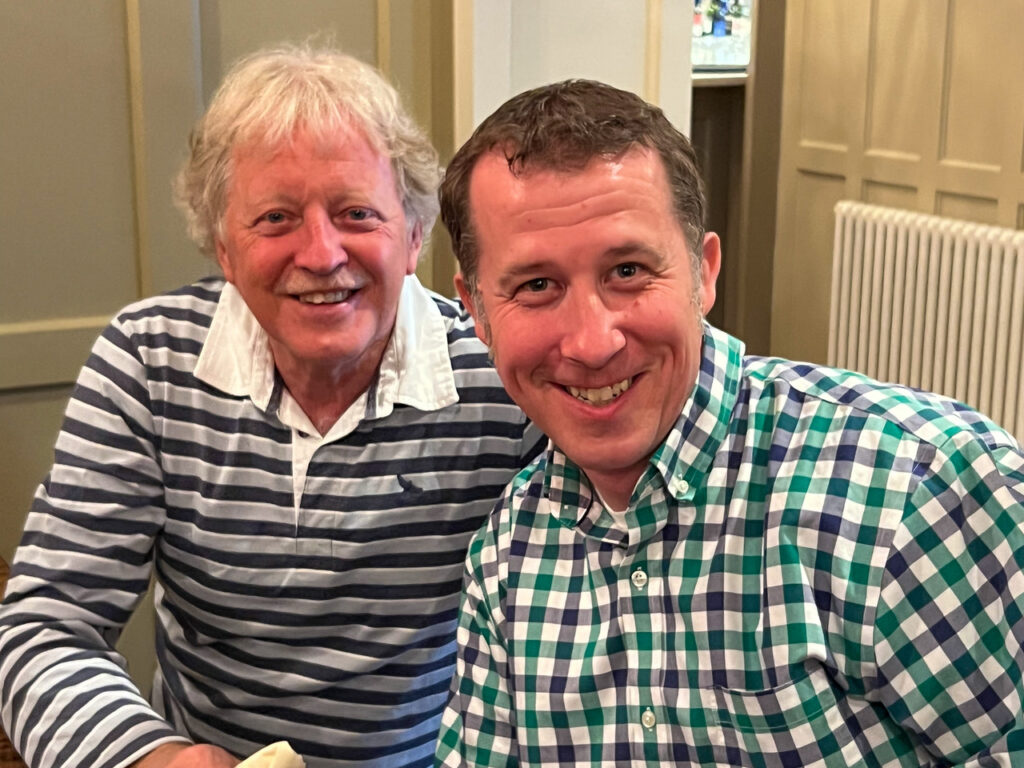Rev. Stephen McKinney-WHitaker • Pastor
June 23, 2022
I’m writing to you from Ireland during my sabbatical in which I’m focusing on the power of story and relationships in the work of reconciliation. I’ve been asked by several people, “What exactly is reconciliation?”
Throughout my time in Ireland I’ve asked peacemakers and reconcilers how they would define reconciliation. You can read more of my in-depth daily notes about those conversations and more. Here are a few of their definitions:
Dr. Jin Kim says, “Reconciliation is building relationships between people who were oppressed because of the conflict structure so they can achieve peace with justice.”
Joe Campbell responded that reconciliation is a journey that takes courage and requires a willingness to let go of old hurts and both accept and give forgiveness. Joe said that reconciliation begins “with me and not the other person.”
Derick Wilson believes reconciliation is the overcoming of enmity and hostility between people, but it’s also about the relationships and structures through which we are at ease with one another. Reconciliation is based upon our relationships and the structures that maintain those relationships. It’s the central message of the gospel, but churches have too often seen it as peripheral.
Jenny Meegan defined reconciliation as forming relationships with people, listening and sharing stories, and meeting people where they are without expecting them to change. Reconciliation often happens by accident, but you have to be open to it and the possibilities of new relationships.
Rev. David Latimer (shown with me in the accompanying photo) insists reconciliation requires risk. Archbishop of Canterbury Justin Welby defines reconciliation as the “art of disagreeing well.”
As I’ve listened, read, observed, and discussed, I think I’ve settled on a definition of reconciliation that works for me and the work I want to do. I define reconciliation as “mending the tears in society caused by broken and fractured relationships.”
I like the idea of mending because it fixes what is broken, but it doesn’t completely erase the tear or wound. I think of mended pants after I rip them because of some act of carelessness. The thread closes the hole, but the scar remains. Reconciliation helps close the wounds in society, but it will not magically erase histories of trauma and scars of conflict. I don’t think it should. Reconciliation is not about everyone agreeing or even approving of each other. It does not magically solve every problem to everyone’s satisfaction. It begins the process of stopping the bleeding and closing the wound.
It reminds me of Kintsugi. This traditional Japanese art uses a precious metal – liquid gold, liquid silver or lacquer dusted with powdered gold – to bring together the pieces of a broken pottery item and at the same time enhance the breaks.
The mended cracks become part of the object’s design, reflecting symbolically an event in the life of that object, rather than the cause of its destruction.
When practicing reconciliation, we may end up highlighting the broken places in our society and relationships, but we will mend them and perhaps they can become something beautiful in our life together in the end.
When I think about the friendship between Rev. David Latimer, retired pastor of First Derry Presbyterian Church, and Martin McGuinness, the former IRA leader, I see this principle at work (read more in the June 9 Sabbatical note). Many people didn’t want them to be friends and for a while it highlighted differences and struggles, but in the end, it brought healing to both men and the community. One man — whose son was killed by an IRA bomb ordered by McGuinness — eventually shook Martin’s hand after he spoke in the church one day. He told David he was proud of him for doing this work, because if he and others like him had done it 20 years earlier, his son might be alive. The crack remains, but it’s more than a broken shattered place now, it’s part of a story of wholeness.
Reconciliation is about mending the broken places so we might become whole; as individuals and as a society. My hope is I can participate in the work and in mending the tears we’ve seen and experienced in our community and nation through the power of story and relationships.